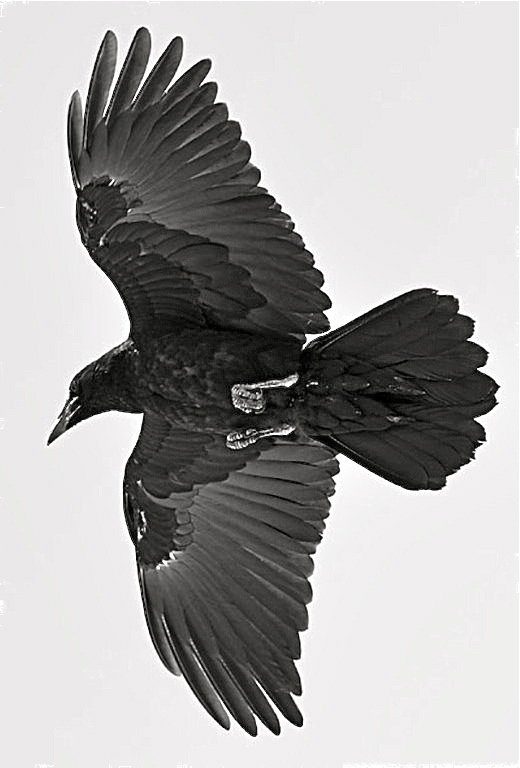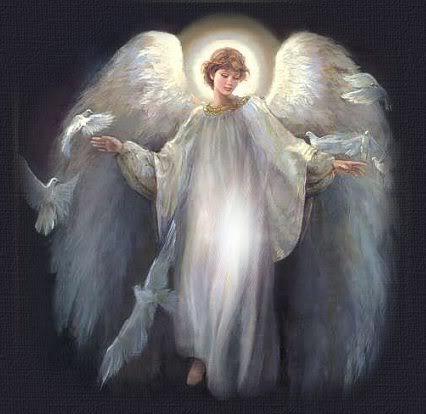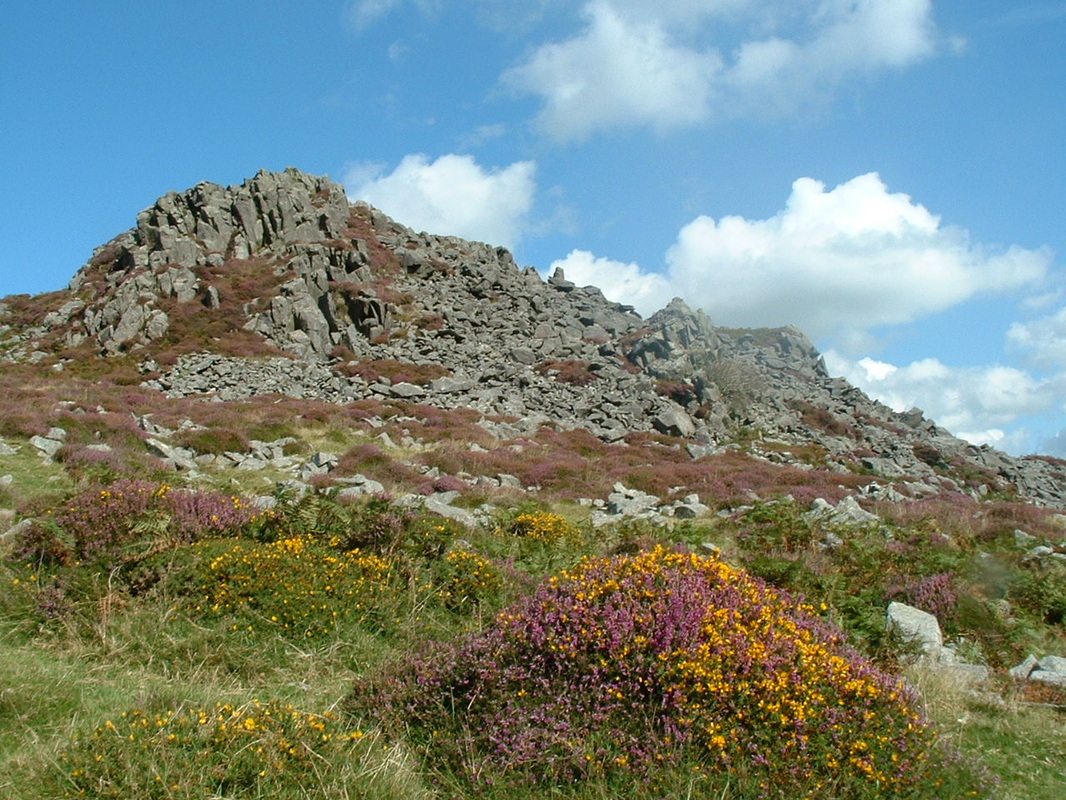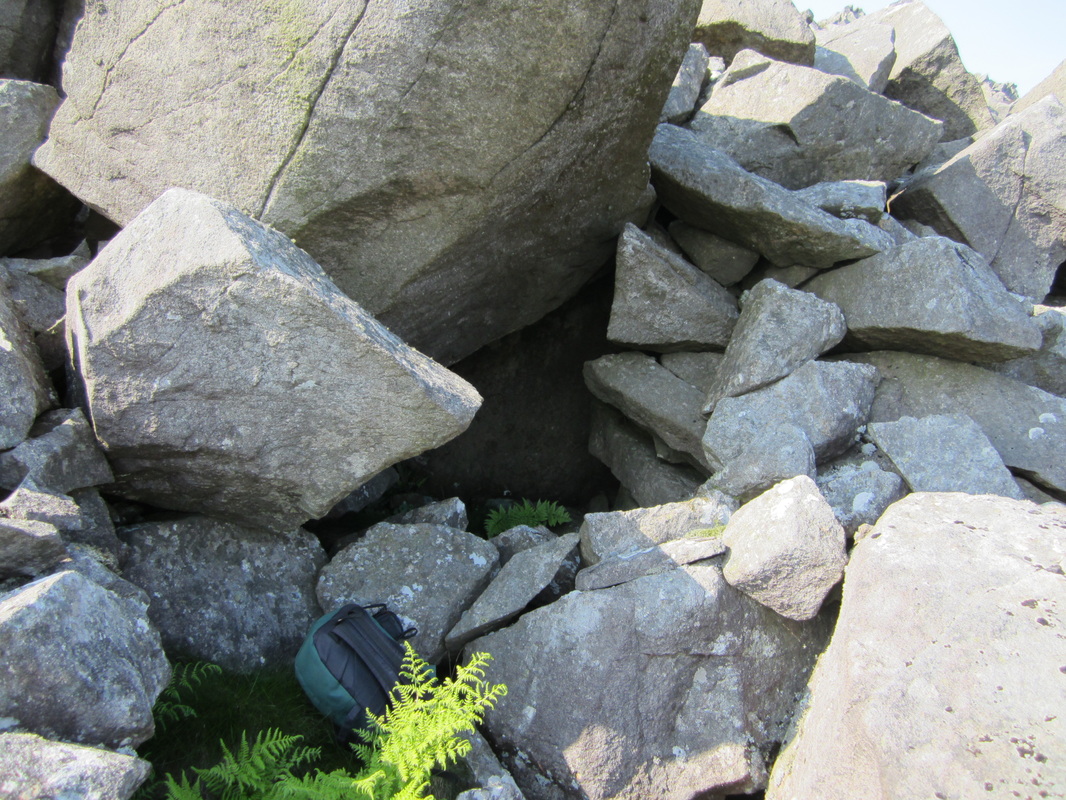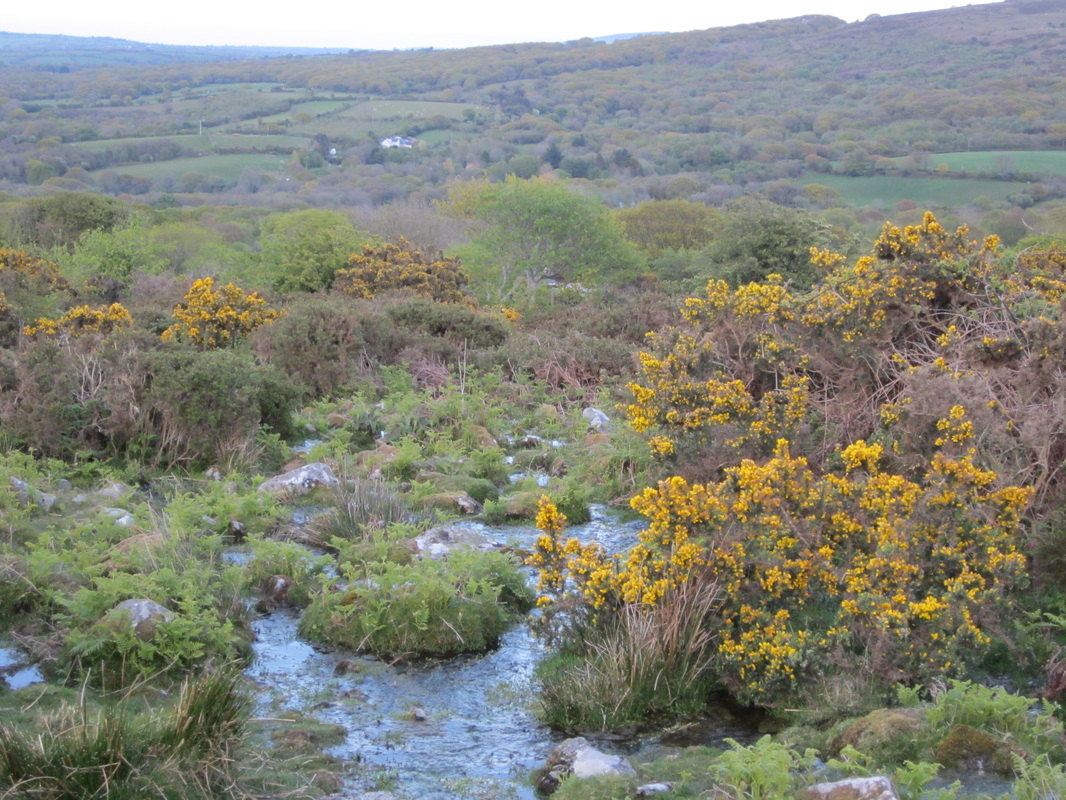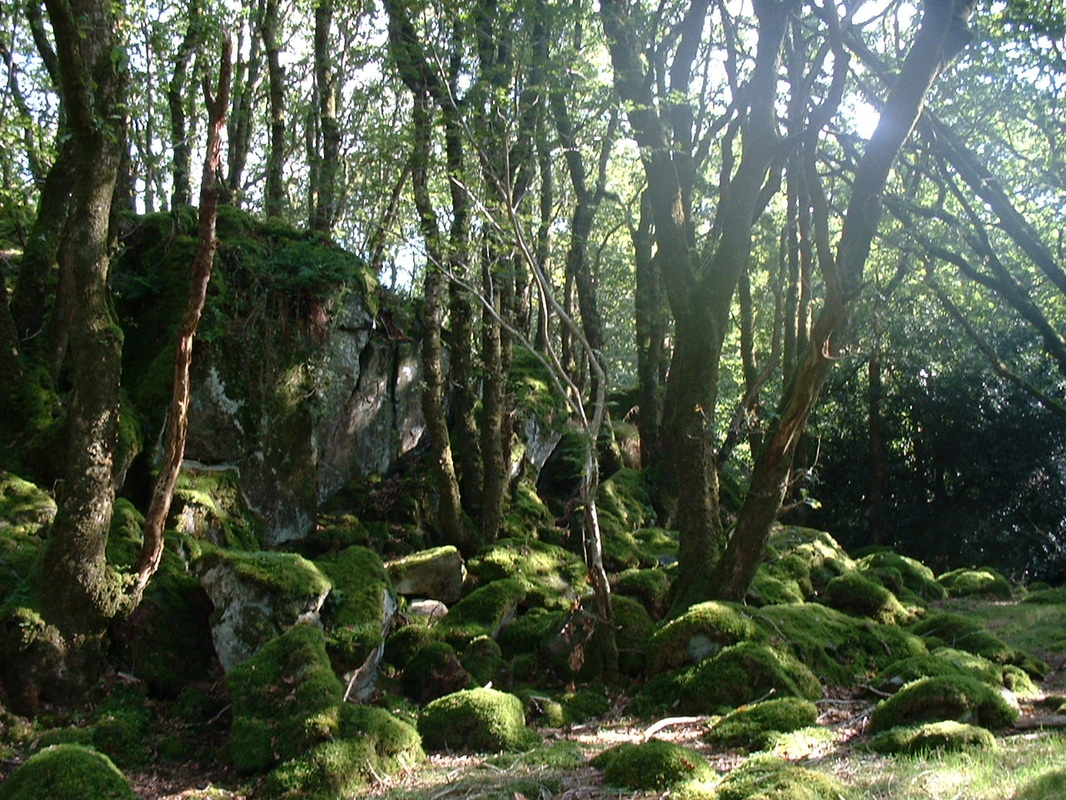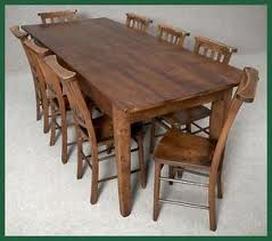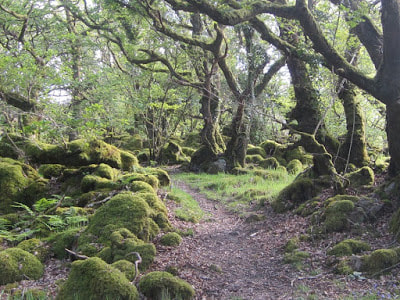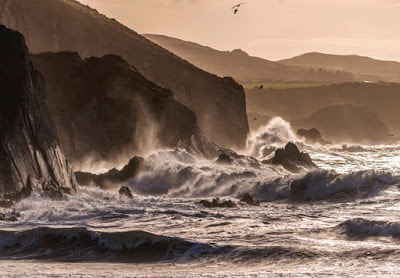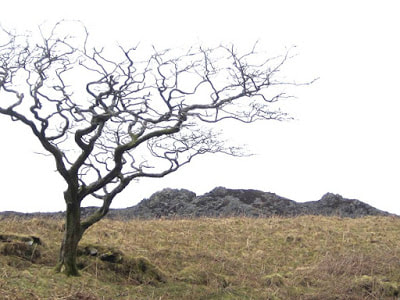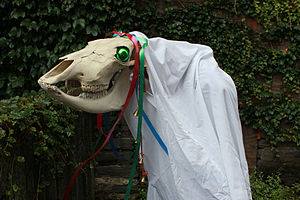Symbols in the Saga
Quite deliberately, the books are full of symbols. Some of them are intentional, and others have appeared in the pages of the Saga without any planning on my part! But if readers wish to see symbols where they were not intended, that’s fine by me. In this short chapter, I want to mention some of the more obvious things that might have significance for the purposes of the story and for the understanding of Martha’s character in particular.
Plas Ingli is the “quiet core” of Martha’s life, and the place where her angels (family and friends) dwell. So, as mentioned earlier in the book, it is her House of Angels. The Mountain The mountain is her cathedral, dominating her world and her consciousness, just as the towers of Durham Cathedral and the mighty spire of Salisbury Cathedral dominate and almost intimidate the little houses and streets in the world below, reminding both God-fearing and godless folk that they are being watched and that they had better be careful. Martha is never frightened of her mountain, and never sees it as a place occupied by some vengeful deity, but she thinks of it as an extension of her own personality and as something high and beautiful which gives her strength. She never articulates this, but she feels that the hard blue rock gives strength to her muscles, and that the fresh air which she inhales is first purified and exhaled by the mountain. Mistress Martha, given life and strength by Rhiannon, the Earth Goddess? That might be going too far, but right from the beginning I knew that Martha had to die on the mountain summit, that the mountain would be convulsed by an earthquake at the moment of her death, and that the summit profile would then be inherited from her profile when she was found by Will, Gerallt and the other men on the following morning. The Cave Martha’s cave (there is obvious sexual symbolism here) is her sanctuary and her altar. Caves are revered in many societies (such as the old Guanche society of the Canary Islands) as symbols of fertility, and are even associated with fertility rituals. Martha describes hers in some detail which decorum forbids me to repeat just now. But if you must, look at page 55 of the first novel! The cave is also, in a sense, the womb, her special place of darkness and peace, which is why she is so outraged, in On Angel Mountain, that Moses Lloyd has defiled it. It is the scene of her most terrifying physical ordeal, and the place where, somehow, she finds the superhuman strength needed to defeat and even kill her tormentor. For months and years after that, she cannot return to the cave, but at last (with Joseph’s help) she does find the strength, and thereafter it is restored to its proper sanctity. The only other people who ever find the cave are Daisy, who is led to it (by the angels of the mountain?) when she is lost, and Iestyn, at the climax of Dark Angel. He is also led to the cave by an angel, and this time the angel is Martha. At the end of Flying with Angels the cave becomes a tomb, for Martha decides that that is where the body of Amos Jones will be laid to rest. The menfolk from the Plas take his body there, in a slow funeral procession, and after placing him inside a big stone is rolled across the entrance. That is another obvious symbol! Martha says that she will never visit the place again, nor does she. The Spring The spring is a symbol too, and it is there that Martha performs her little rituals of drinking the crystal-clear water and anointing herself with it. The water refreshes and purifies. Ffynnon Brynach provides sacred and healing water for the Plas, reinforcing the sanctity of the house. When Moses defiles the spring by destroying the pool and dismantling the piped overflow, Martha attaches an almost religious significance to his actions. “Desecration!” she cries, and her sense of outrage compounds her determination to bring the villain to justice for crimes which she -- at that stage -- only partly understands. The Ravens The ravens are symbols -- not (as in Teutonic mythology) symbols of death and darkness, but as in Celtic mythology symbols of nobility, royalty and assorted other virtues such as steadfastness and protectiveness. The ravens are the spirits of the mountain, and although they are black they are really the mountain’s “host of angels”. Martha is very fond of them. Sometimes she pays attention to what they are telling her, and sometimes -- because she is preoccupied with her petty obsessions and fails to read the signs -- she disregards them and pays the price. At the very end of the Saga , following Martha’s death, six ravens appear on the mountain and watch as her body is carried back to the Plas. They are of course the spirits of Martha and her five men -- David, Ceredig, Owain, Joseph and Amos. Maybe Iestyn should have been there too, to make the number up to seven......... |
Angels
Angels figure very strongly in the books of the Angel Mountain Saga. But not one of them looks like this:
In the old Welsh language, "ingli" meant "angels" -- and so Carningli is the mountain of the angels and Plas Ingli is a place or a palace of angels. So the territory in which the eight novels are set is infused with angelic qualities!
Martha, the heroine of the stories, seldom refers to angels directly, but she certainly feels a certain sacred quality in the mountain itself, and this --in part -- explains the intensity of her relationship with it. Her family and servants are certainly angels, since they frequently rescue Martha from her inevitable scrapes. And in spite of her own character flaws she is also something of an angel, given her qualities of compassion and loyalty. Sometimes she is an angel of mercy, and sometimes she is an avenging angel -- and quite frequently she is a fallen angel too....... Now and again in the stories Martha encounters angels in unexpected guises -- and because of her essential goodness she does seem to trigger off sudden episodes of compassion and selflessness in others, when least expected. Maybe this reflects the optimistic theme that runs through all of the novels, based on the idea that there is love and virtue in all of us, and that in the great scheme of things virtue is always rewarded. Of course, the ravens that inhabit the mountain are also angels -- although they are black and not white, and although they are associated in the Anglo-Saxon tradition with darkness and death. In the Celtic tradition ravens are not sinister figures. Mysterious and enigmatic, maybe -- but also wise and all-seeing. So they guard the mountain and Martha too -- as the resident flock of angels. In the introductions to the stories, ravens always provide the essential clues which lead to the discovery of a new diary written long ago in the hand of Martha Morgan. There seems to be one raven which appears over and again during the sequence of diary discoveries. Is this really the spirit of Martha Morgan, still with us, hidden away for most of the time, but occasionally visible to those who are specially favoured? The Kitchen Table
Then there is the kitchen table, solid and unmoving, the place where many of the dramas of the novels are played out. If you like, you can see it as an altar -- a place where bread is broken and wine is shared. It is the real centre of affairs -- a place of discussions and disclosures, meal-times and fellowship, life-saving operations, and even the examination and preparation of corpses. Here Martha dispenses orders and advice to others, and sometimes receives admonishment in return. The kitchen table is the place where, in volume 4, Zeke tries to rape Gwenno, and where he is almost blown to bits by Martha. So there is blood here too, in addition to bread and wine. But it is blood spilt in retribution, and not in self-sacrifice. |
Looking for Meaning
This is from an article by Rachel Mork:
What Is Symbolism in Literature? Symbolism is when the author uses an object or reference to add deeper meaning to a story. Symbolism in literature can be subtle or obvious, used sparingly or heavy-handedly. An author may repeatedly use the same object to convey deeper meaning or may use variations of the same object to create an overarching mood or feeling. Symbolism is often used to support a literary theme in a subtle manner. What Are Some Examples of Symbolism? The following are common symbols used in literary works:
What Are Common Cultural Symbols? When looking for cultural symbols in literature, you'll want to think of what symbols represent moral standards, beliefs or patriotic themes for a culture or country. How Do Writers Use Symbolism? Writers insert symbols into their writing to allude to a feeling, mood or attitude without directly stating the perspective or mood intended. Symbolism is supplemental to the story. That all having been said, we need to remind ourselves that readers of stories such as those of the Angel Mountain Saga read in different ways, bringing different bits of cultural and personal baggage with them. Some readers LOOK for symbols and others do not. I have been struck by the open and easy manner in which some readers have tackled the books, looking just for a good story packed with incidents and believable characters -- whole others are much more intense and analytical, searching for meaning where sometimes there is none! As an author, I have to say that some sections of my narrative have been taken by certain readers as being pregnant with meaning and symbolism -- even though when writing those sections I had no idea that there was any "hidden" content at all. Such is the joy and mystery of literature -- and such is the mysterious and even magical bond between writer and reader...... What else?
Well, the grove in Tycanol Wood, where Martha makes love with a number of different men during her long life, is a place both sacred and profane, and a place of ecstasy and terror. Bessie, if you like to see it this way, is Martha’s conscience. Jones Minor Prophet is a Christ-like figure, too good to be allowed to survive -- and he ultimately sacrifices himself to save others. The old traditions like the Wren House, the Ceffyl Pren and the Mari Lwyd are replete with symbolism. Some have seen symbolism in dates and numbers -- there may be symbols there, quite unbeknown to me............. Yes, there are many symbols in the books, although I have tried not to cram in so many as to make the stories into allegories or parables. |
